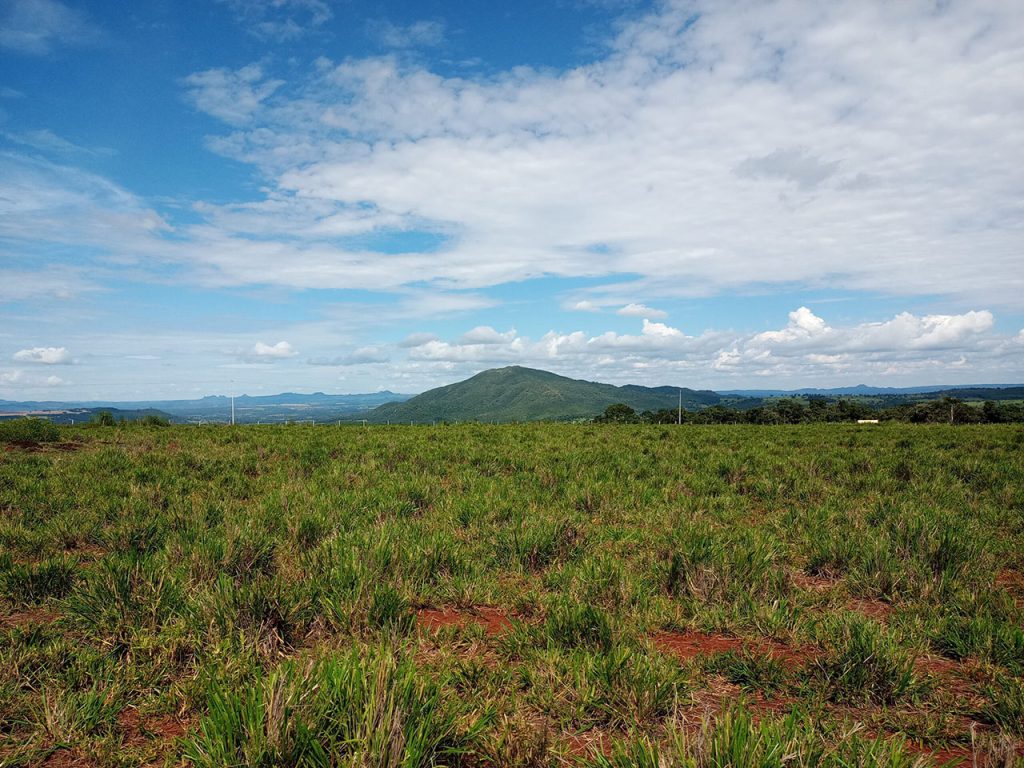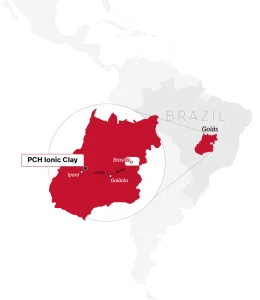Appia announces a mineral resource for their PCH project in record time

By Ian Foreman
Appia Rare Earths & Uranium Corp. [CSE-API, OTCQX-APAAF, FSE-A0I0] has advanced their ionic clay-hosted rare earth element (or ‘REE’) PCH project, located in Goiás State, Brazil, from acquisition to a mineral resource estimate at record speed. In only nine short months Appia has done what can take other companies up to several years.
 From the get-go, Appia has had a singular focus – to advance the project as quickly as possible. And they have delivered that in spades. Appia has advanced the project so quickly that they may not be on people’s radars yet!
From the get-go, Appia has had a singular focus – to advance the project as quickly as possible. And they have delivered that in spades. Appia has advanced the project so quickly that they may not be on people’s radars yet!
The mineral resource estimate is starting to get noticed, not only for its size, but for its high grade as well.
The mineral resource estimate for Target IV as well as the newly discovered Buriti zone, which is located immediately to the south of Target IV, stands at a combined 52.8 million tonnes. This is comprised of 6.6 million tonnes in the indicated category with a grade of 2,513 parts per million total rare earth oxide (or TREO) and 46.2 million tonnes in the inferred category with a grade of 2,888 ppm TREO.
This resource may be more valuable as it contains significant concentrations of neodymium, praseodymium, dysprosium, and terbium. These elements form a sub-suite of REEs termed Metal (or Magnet) Rare Earth Elements (MREEs), which are the rare earth elements used in the production of permanent magnets and currently in high demand.
The block model for the mineral resource estimate was created in such a way as to provide an optimized pit envelope. As a majority of the mineralization extends to surface, the stripping ratio of a potential mine would be negligible. Combine that with the fact that the mineralized clays would only require earth moving equipment and the projected economics of extracting the REEs is dramatically reduced.
The block model representing the current resource was based on a total of 138 reverse circulation drill holes and one diamond drill hole, which collectively produced 1,869 samples. Only the topsoil, clay and saprolitic material was included in the block model, which is typical in ionic clay hosted deposits.
- The MRE has an effective date of the 1st of February 2024.
- The Qualified Person for the MRE is Mr. Yann Camus, P.Eng., an employee of SGS.
- The MRE provided in this table were estimated using current Canadian Institute of Mining, Metallurgy and Petroleum (“CIM”) Standards on Mineral Resources and Reserves, Definitions and Guidelines.
- Mineral Resources that are not Mineral Reserves have not demonstrated economic viability. Additional drilling will be required to convert Inferred and Indicated Mineral Resources to Measured Mineral Resources. There is no certainty that any part of a Mineral Resource will ever be converted into Reserves.
- All analyses used for the MRE were performed by SGS GEOSOL by ICM40B: Multi Acid Digestion / ICP OES – ICP MS and by IMS95R: Lithium Metaborate Fusion / ICP-MS.
- MRE are stated at a cut-off total NSR value of 10 US$/t. The full price list and recovery used to estimate the NSR is in Table 2. The estimated basket price of TREO is US$26.98.
- GEOVIA’s WhittleTM software was used to provide an optimized pit envelope to demonstrate reasonable prospection for economic extraction. Preliminary pit optimization parameters included overall pit slope of 30 degrees, in-pit mining costs of $2.10, processing and G/A costs of $9/t, and overall mining loss and dilution of 5%. Full details of the preliminary pit-optimization parameters can be found in Table 2. The basket price and oxides price list in Table 2 are based on forward-looking pricing. These future prices are predicted based on market trends, economic forecasts, and other relevant factors. The actual prices may vary depending on changes in these factors.
- Figures are rounded to reflect the relative accuracy of the estimate and numbers may not add due to rounding.
- Resources are presented undiluted and in situ, constrained within a 3D model, and are considered to have reasonable prospects for eventual economic extraction.
- Bulk density values were determined based on physical test work and assumed porosities for each type of material.
- Total Rare Earth Oxides: TREO = Y2O3 + Eu2O3 + Gd2O3 + Tb2O3 + Dy2O3 + Ho2O3 + Er2O3 + Tm2O3 + Yb2O3 + Lu2O3 + La2O3 + Ce2O3 + Pr2O3 + Nd2O3 + Sm2O3
- Magnetic Rare Earth Oxides: MREO = Sm2O3 + Tb4O7 + Dy2O3 + Pr6O11 + Nd2O3
- Heavy Rare Earth Oxides: HREO = Sm2O3 + Eu2O3 + Gd2O3 + Tb4O7 + Dy2O3 + Ho2O3 + Er2O3 + Tm2O3 + Yb2O3 + Lu2O3
- The MRE may be materially affected by environmental, permitting, legal, title, taxation, socio-political, marketing, or other relevant issues.
The term ‘ionic clay’ refers to a type of clay with charged particles, or ions, that are embedded in its structure. These charged elements enhance the clay’s ability to attract and exchange ions with surrounding substances, which in the case of the PCH project is REEs. Ionic clay deposits can be mined with low-cost mining techniques and processed using simple technologies. Brazil is well known for these types of deposits and one of the largest ionic clay REE deposits, the Serra Verde ionic clay REE deposit, is also located in the same state as the PCH project.
The mineralogical content of ionic clay deposits is then influenced by the surrounding rock types as well as weathering rates. The country rock underlying the project area appears to be well mineralized with REEs. The solitary drill hole drilled within Target IV was drilled to a total depth of 243.25 metres and the entire drill hole was mineralized with REEs. The average for the hole was 1,901 ppm, or 0.19 percent, TREO over the entire 243.25 metres.
At this time the company is not including the mineralized country rock in the resource estimate because the processes required for mining and extraction would be different and is not currently part of the company’s development strategy for the project.
Current data indicates that there are subtle differences between the targets. As an example, the north and northwest portions of Target IV are more enriched at shallower depths whereas the Buriti target appears be enriched at depth. Another difference between the deposits is that significant anomalies of scandium and cobalt have been identified in the Buriti zone, which would add additional potential resource value to the project. In addition, the company is currently undertaking a significant evaluation of the potential desorbed rare earth oxide (or DREO).
The mineralization within Target IV is locally very high grade. This is exemplified by drill hole PCH-RC-063, which returned 24 metres with a weighted average of 38,655 ppm, or 3.87 percent, TREO and 92,758 ppm, or 9.28%, TREO from 10 to 12 metres. “… with some of the highest TREO grades in the world, we are well on our way to establishing the company as a leader not only in Brazil, but around the globe,” stated Tom Drivas, CEO of Appia.
With the early success at Target IV and the Buriti Zone, the company decided to increase the size of the PCH project. And like anything that this management team does, they committed to that endeavor whole heartedly. The company more than doubled the size of the project area to its current size of 40,963.18 hectares, or 409.63 square kilometres.
The company will continue to drill the Target IV and Buriti Zone with the goal of advancing and increasing the current resources. In addition, they will be exploring and, hopefully, developing other targets as well. To that end, Appia has only scratched the surface of their huge project area. As the resource area covers a combined 483 hectares, the drilled area only represents approximately one percent of the entire PCH project.
The logistics for working the project area are simplified due to the project area being proximal to the city of Iporá, the centre for a region that has significant mineral exploration and mining activity as well as the infrastructure to support the industry.
Appia isn’t just working on its PCH project in Brazil, the company has two other projects in Canada. They hold the exploration rights for 94,982.39 hectares, or 949.8 square kilometres, in Saskatchewan where they are currently delineating high-grade REEs and gallium at the Alces Lake property, as well as exploring for high-grade uranium in the prolific Athabasca basin on the Otherside, Loranger, North Wollaston and Eastside properties.
In the Elliot Lake uranium camp, located approximately 150 kilometres west of Sudbury, Ontario, Appia also has a 100 percent interest in the 13,008 hectare, or 130 square kilometres, of land that contains five REE and uranium deposits.
The Teasdale Lake Zone is host to an indicated mineral resource of 14,435,000 tons with a grade of 0.554 pounds U3O8 per ton and 3.30 pounds of TREE per ton, resulting in a total of 7,995,000 pounds of contained U3O8 and 47,689,000 pounds of TREE. In addition, the current inferred mineral resource at the Teasdale Lake Zone stands at 42,447,000 tons, grading 0.474 pounds of U3O8 per ton and 3.14 pounds of TREE per ton, which totals 20,115,000 pounds of U3O8 and 133,175,000 pounds of TREE. The second advanced target is the Banana Lake Zone where the inferred mineral resource is 30,315,000 tons grading of 0.912 pounds U3O8 per ton, which results in a total of 27,638,000 pounds of contained U3O8.
With work planned on two continents, Appia anticipates frequent updates and news-flow through to the end of 2024. To say that they are busy is an understatement.

